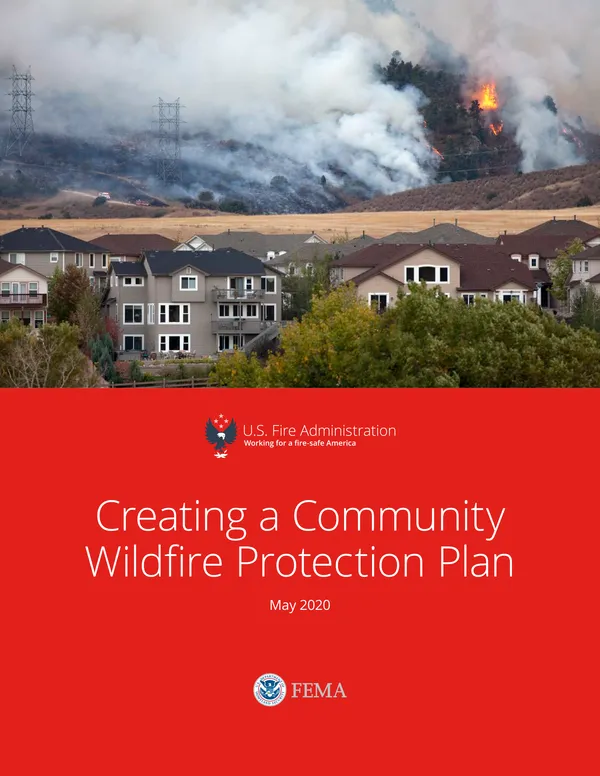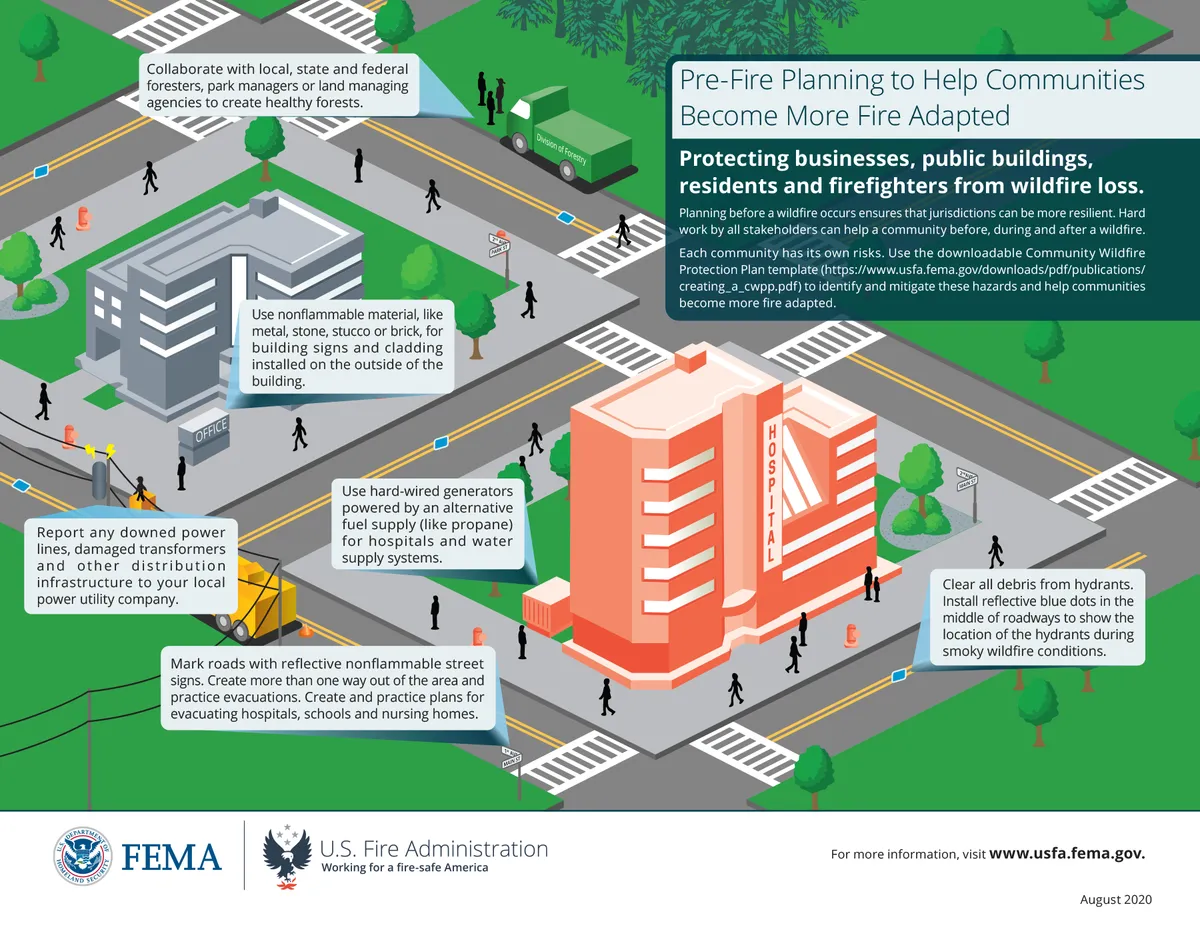Assess Community Risk
How to become fire adapted
Create a written assessment of identified risks using a Community Wildfire Protection Plan (CWPP). A CWPP can help you to strategically document local risk and create an action plan and it will help everyone understand how making improvements to their home and the area around their home can create a more favorable outcome.
Tip: Work with your state emergency manager and/or Federal Emergency Management Agency region contact to learn how you can integrate your CWPP and other plans into an all-hazards mitigation plan. Include an evaluation of the potential effects of wildfire smoke and post-fire flooding, as well as fire evacuation needs to help create a resilient community.

Creating a Community Wildfire Protection Plan
This guide will assist you in making a CWPP. The form-fillable templates in the guide allow you to create an action plan and document assets at risk, forest/landscape health issues, and key stakeholders.
Download the guide to your device and then open it in a PDF reader to view and complete the templates. The templates will not display if the PDF is viewed with your browser.
Don't forget businesses and infrastructure.
Pre-fire planning helps communities to become more fire adapted

These illustrated pre-fire planning tips will help you protect businesses, public buildings, residents and firefighters from wildfire loss.
More information on how to create a CWPP
Community Wildfire Protection Plan Leader's Guide
The local-level approach used in this guide will help fire service leaders develop and implement a CWPP for their community.
Best Management Practices For Community Wildfire Protection Plans
A collection of lessons that empower communities and their partners to produce a CWPP that takes into account their social and ecological contexts in addressing local wildland fire issues and concerns.
Critical Elements in the Implementation of Community Wildfire Protection Plans
Developing a CWPP can lead to benefits beyond those associated with fuels reduction, including enhancing social networks, developing learning communities and building community capacity.
